E-waste means any electronic device with a battery or a cord that has been disposed of. This includes mobile phones. Globally, we create over 50 million tonnes of e-waste every year, which poses significant risks to the environment and human health. Mobile phones and their batteries are one of the fastest growing categories of e-waste. Let’s see what happens when you dispose of your phone.
What happens to batteries and our devices when we no longer use them?
How big is the problem of e-waste?
If we put together every commercial airplane ever built, they would weigh fifty million tonnes in total. This is equal in weight to the amount of e-waste that is produced yearly.
The way we dispose of batteries matters
E-waste is a rapidly growing issue related to how, where, and when we dispose of our devices.
All animated data below provided courtesy of A New Circular Vision for Electronics, World Economic Forum and the BBC
Mobile phones are disposed of more frequently, or at a faster rate, than other types of devices.
Mobile phones, therefore, are a major contributor to e-waste. A United Nations study reported that about 50 million tonnes of e-waste were discarded in 2018. In 30 years, it is expected to more than double.

Global E-Waste Flows: This map shows where the most e-waste is being generated and where it ends up around the world. Click on a country to see where e-waste is coming from and where it goes.
Source: Lepawsky, Josh. 2015. ‘The Changing Geography of Global Trade in Electronic Discards: Time to Rethink the E-Waste Problem’. The Geographical Journal 181 (2): 147–59. doi:10.1111/geoj.12077
Of all this waste, 80% is not disposed of properly.
That means that 80% of e-waste is disposed of in a way that can’t be properly recycled, like being placed in the trash. This has serious consequences.
What are the safety risks of disposal?
Devices like our mobile phones contain toxic materials including lead, mercury, and arsenic. When we leave mobile phones in landfills, this can have disastrous environmental consequences.
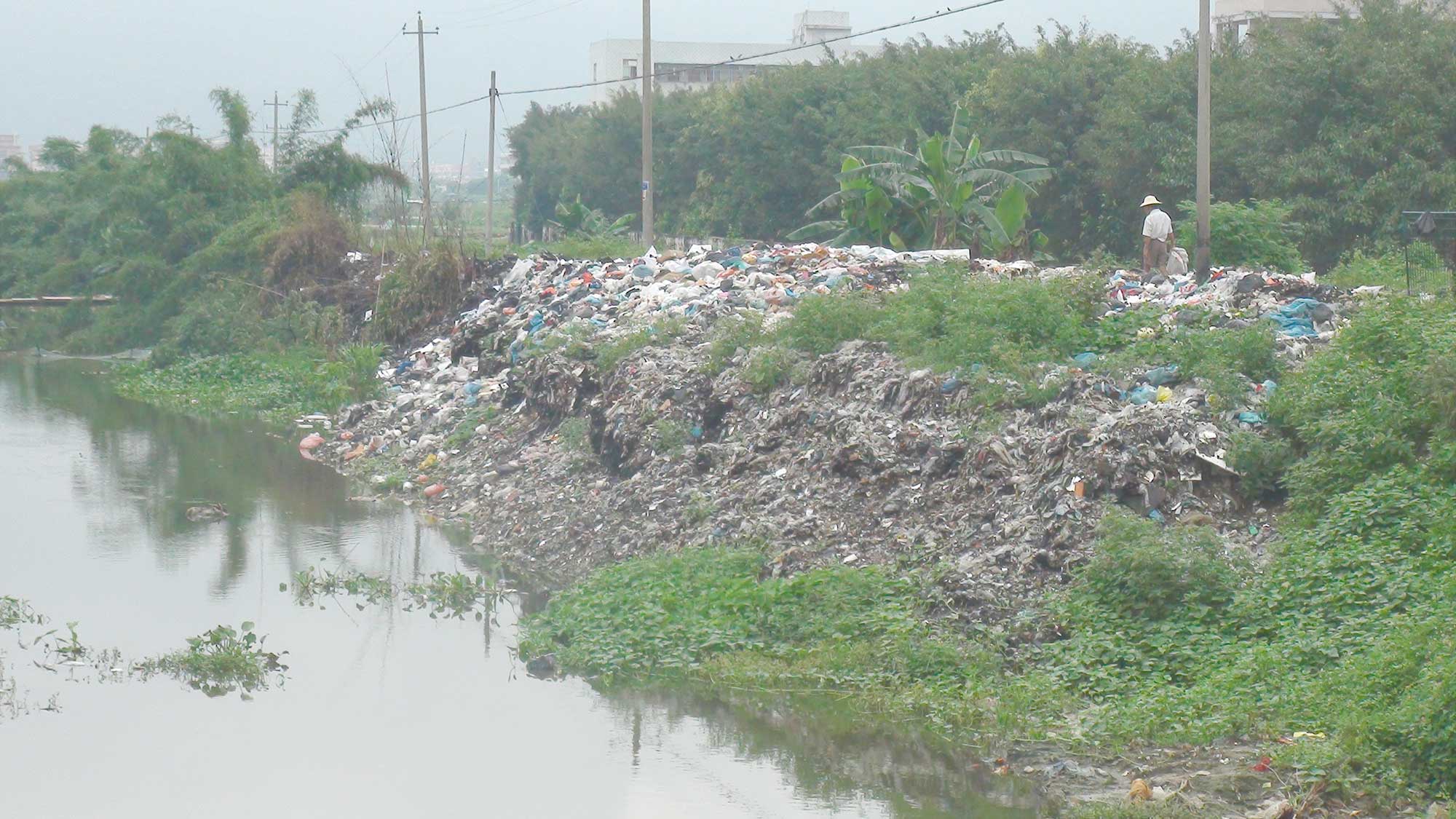
When toxins leach into the water system, pollution can run downstream into agricultural sites, drinking water, and ecosystems. What do you think the impacts might be on people and wildlife?
Lead (Pb) is used in mobile phone circuitboards. Lead is a neurotoxin and exposure to the metal from drinking contaminated water can result in high blood pressure, heart and kidney disease in adults and neurological damage in children.
Mercury (Hg) is used in mobile phone circuitboards. Mercury poisoning can cause muscle weakness, numbness, and at high levels, can cause the skin to turn pink and peel, especially in children.
Arsenic (As) is used in mobile phone microprocessor and camera chips. If arsenic is in the body for a brief period of time, it can cause vomiting and severe abdominal pain. Long-term exposure can lead to skin, lung, bladder, and kidney cancer.
China: Over time toxic metals seep into the surrounding water, soil, and plants. This is called “leaching.” When toxic metals leach into the water, soil, and plants, people and animals suffer from health impacts. People can develop chronic diseases in their circulatory systems, respiratory systems, and brain functions.
Photo courtesy of Basel Action Network, https://www.ban.org
Unfortunately, sometimes non-repairable mobile phones are sold illegally as e-waste to scrap yards in developing countries. At these waste sites, people take apart electronics by hand and scavenge for valuable pieces of material.
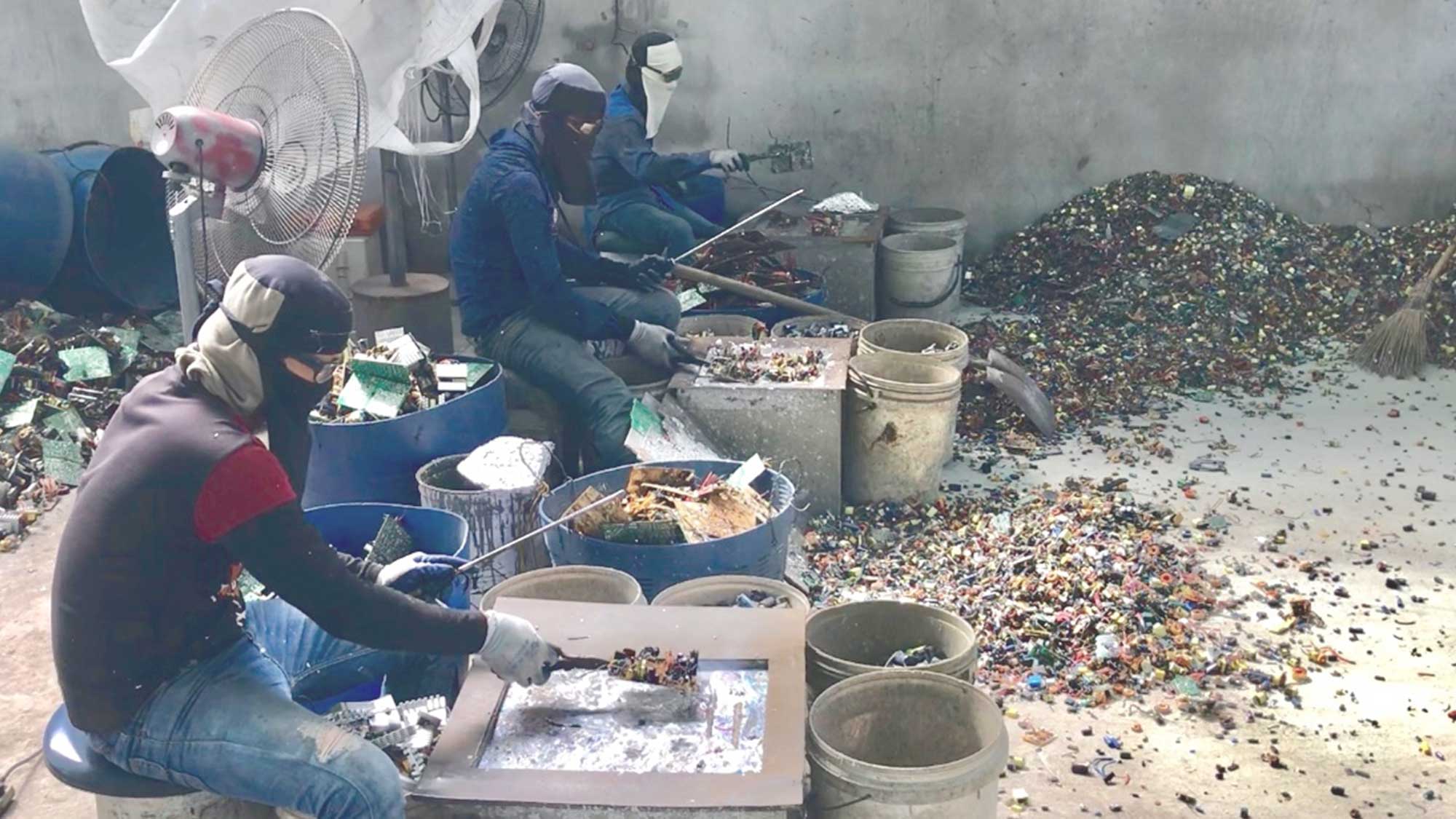
The people who burn recycled electronic devices are especially vulnerable to severe health hazards, and so are the people who live near these sites.
Constantly inhaling the smoke, dust and toxic fumes from burning e-waste is dangerous as it can cause chronic respiratory illnesses and other diseases.
Exposure to toxins in the air is linked to birth defects and chronic illnesses, especially in children.
Thailand: When components are glued in mobile phones, the electronics are burned in order to dissolve the glue and remove the components. The valuable parts, like gold or copper, are sold.
Photo courtesy of Basel Action Network, https://www.ban.org
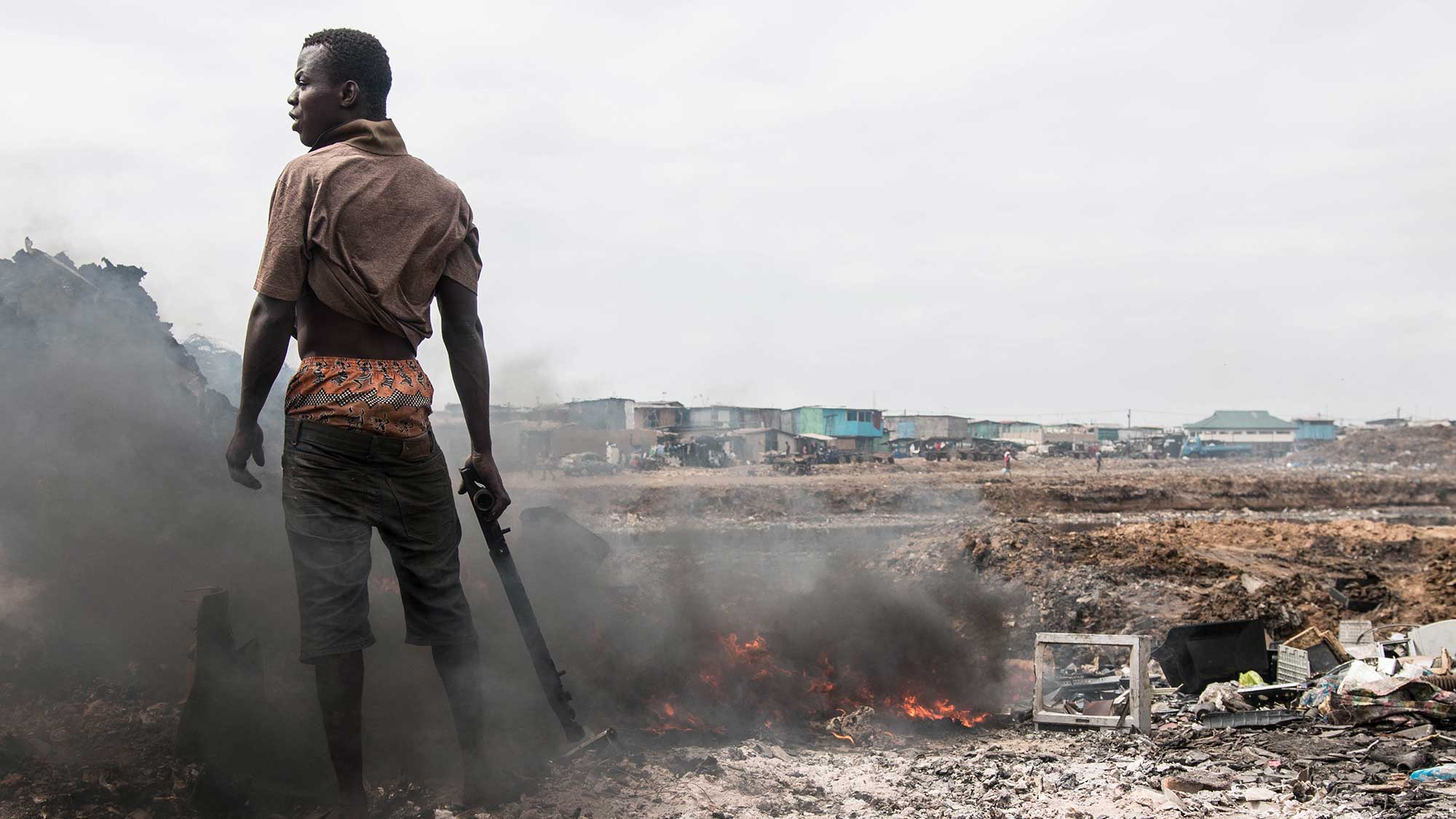
Burning in these sites is common to try to expose the valuable materials.
Little to no protections are available to people who work in these sites as they include some of the poorest people on the planet.
Fire at scrapping sites can cause severe risks to people working there. Lithium-ion battery fires can be hard to control.
Accra, Ghana: E-Waste is truly a global problem and waste sites like these exist all over the world. Many of these sites are in the poorest areas of the world where health and safety protections are too expensive and difficult to enforce.
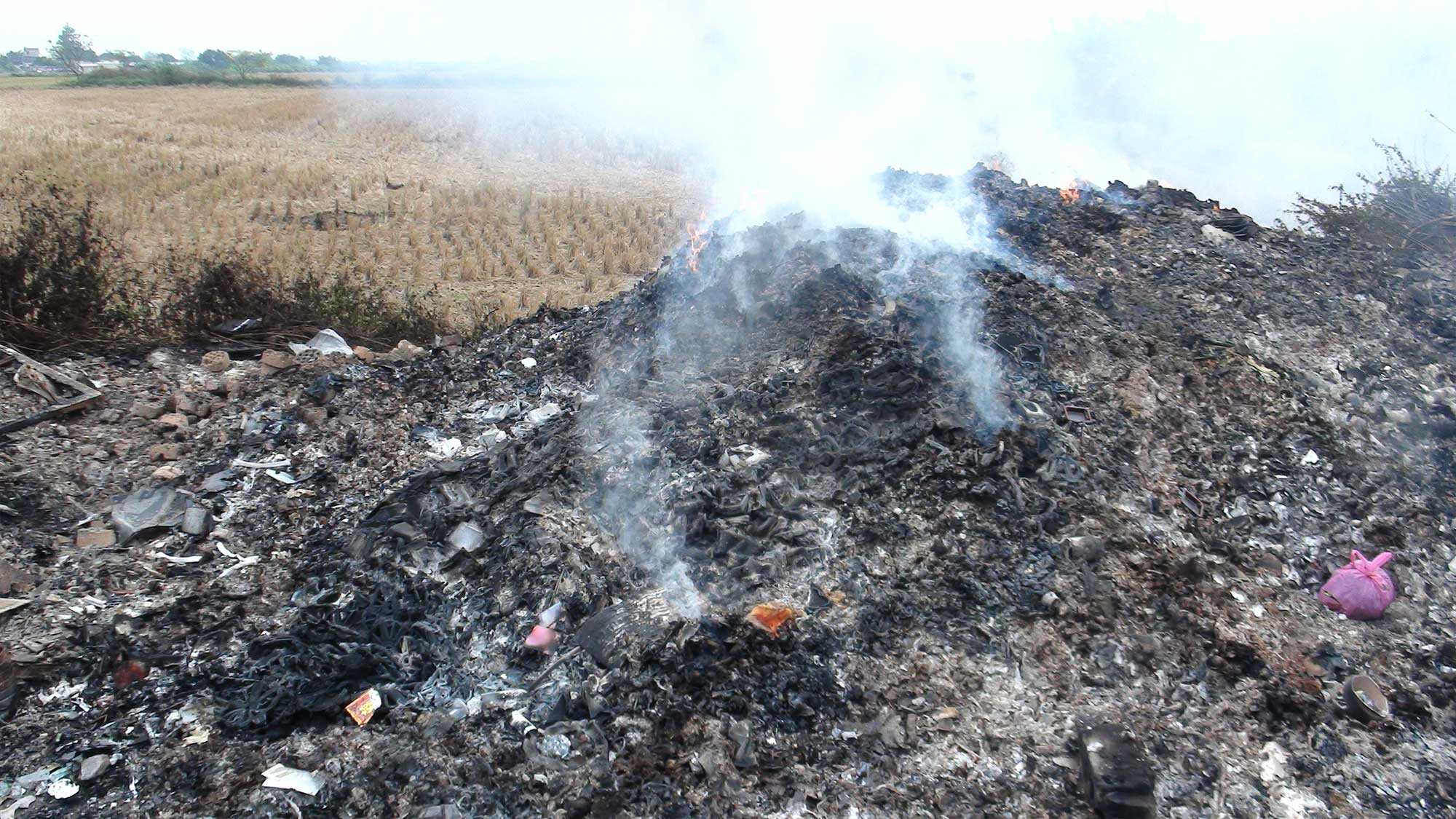
Pollution doesn’t just stay in the area where it is started. Chemicals from burning waste can easily reach the food supply as pollution in smoke can be infused directly into nearby crops. The smoke and pollution can cause long-term health impacts on people and animals.
Animals absorb copper when feeding in contaminated ground, leading to poor health. An excess of copper in the water has adverse effects on aquatic life, with damage to freshwater organisms such as fish.
Water sources are usually near food crops. Toxins in smoke from burning waste moves through the soil. This can poison the local water supply and last for generations of people living nearby.
In 2008, 80% of children experienced respiratory ailments and were especially at risk of lead poisoning in Guiyu, China, pictured here.
Guiyu, China: Burning sites often have the presence of heavy smoke in the air and heavy metals (copper and lead) in the soil. Rainwater carries these contaminants into water supplies (lakes, ponds, and reservoirs), and crops grown near these areas will store the contaminants.
Photo courtesy of Basel Action Network, https://www.ban.org
The long term health and environmental impacts of e-waste are seen in both the poorest and richest countries in the world. This is a problem that affects all countries.
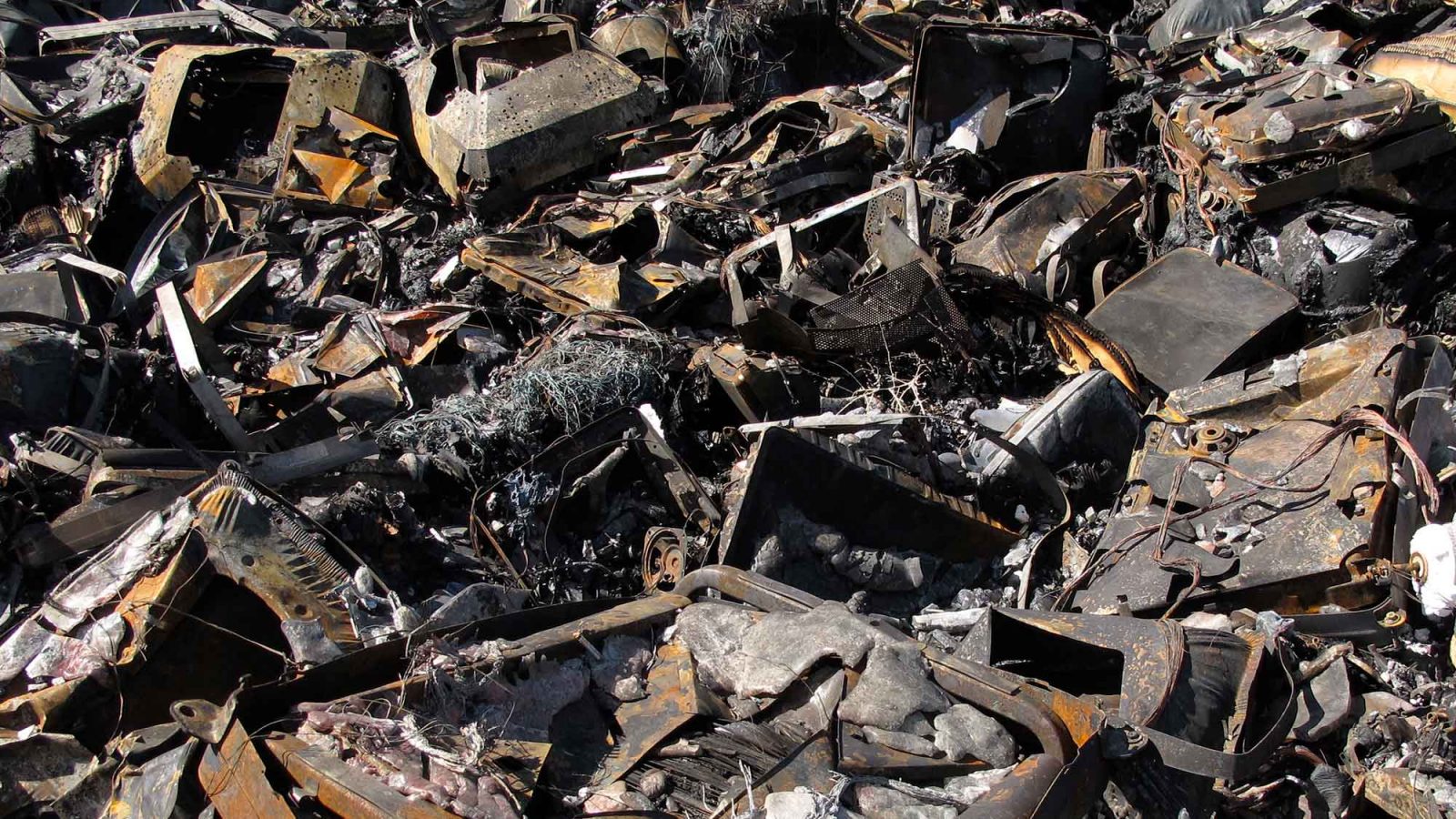
Utah, United States: E-waste is not just limited to phones but includes all electronics including large ones such as televisions, computers and car parts. This is an image from the United States. What do you see? What is the main electronic in this burned e-waste? What do you think are the health impacts?
Photo courtesy of Basel Action Network, https://www.ban.org
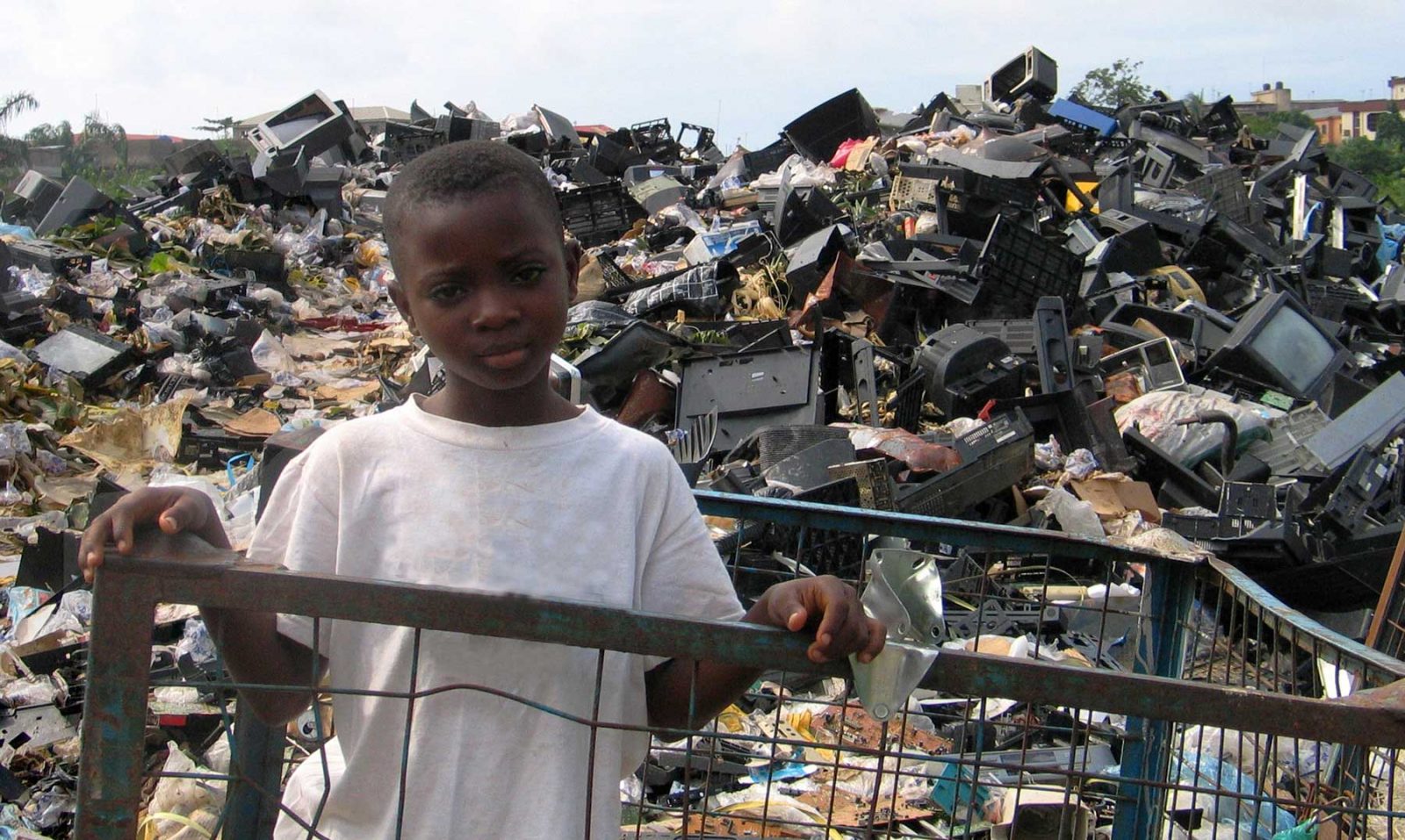
Lagos, Nigeria: E-waste is sometimes piled up with other trash. Investigate this photograph. What are the electronics? What other trash do you see? Without judgment of the people who live there, make some predictions about the environmental and health impacts of this scenario.
Photo courtesy of Basel Action Network, https://www.ban.org
The impacts of E-waste
As we have seen, e-waste is a major problem now and it is expected to get worse. As we go from producing 50 million tonnes a year to 120 million tonnes in the next 30 years, what will the impacts be? Are there ways to reduce the amount of e-waste we produce? Are there better approaches to the extraction, manufacturing, transportation, use, and disposal of our mobile devices and other electronics that can make a difference?
